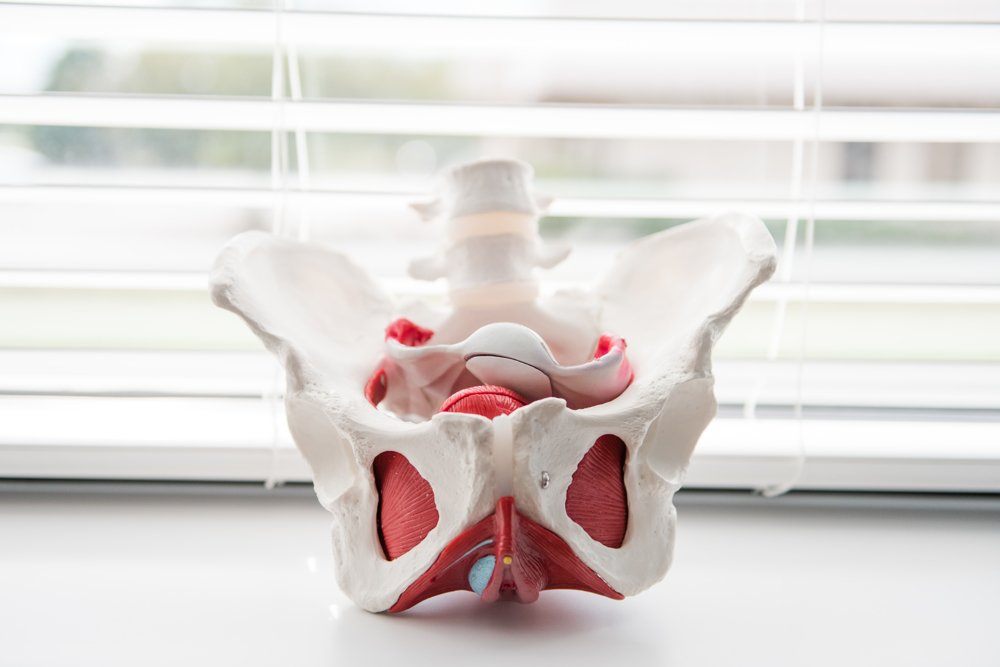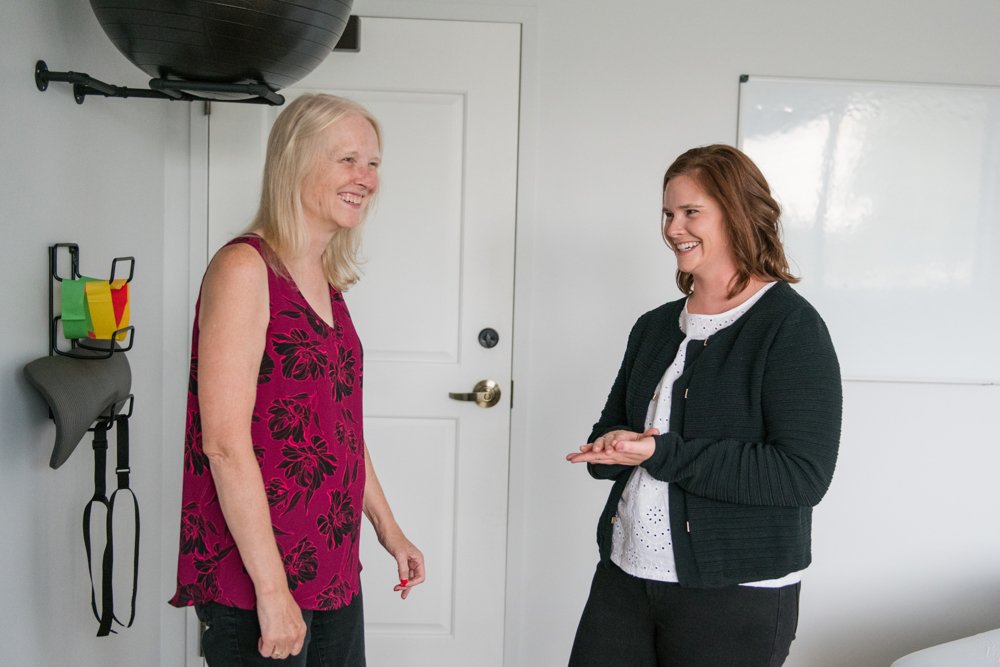
“Common” does not mean you need to tolerate pelvic dysfunction anymore.
Focusing on you
How can we help?
Pelvic Dysfunction
Pelvic dysfunction can include any symptoms in your bladder, your bowel or due to pain or prolapse of the pelvic organs or tissues. If you believe you are suffering from a condition not listed, please contact the office to discuss whether or not I can help you or if you will need a referral to another practitioner.
Bladder dysfunction
This is a fancy way of saying “anything that’s not working quite right with your bladder” and can include a lot of different symptoms. Bladder dysfunction, specifically incontinence and urgency, is very common but this does not mean it’s normal and that you have to continue to suffer from this!
Urinary Incontinence (involuntary loss of urine)
Urinary Urgency (can’t get to the bathroom on time or always feeling the need to go)
Interstitial Cystitis (IC)/Painful Bladder Syndrome (an unpleasant sensation of pain, pressure, or discomfort that is believed to be related to the bladder with symptoms being present for greater than 6 weeks in the absence of infection or other identifiable cause. Food sensitivities can be present but are not always present)
Difficulty Initiating Bladder Emptying (feel like you have to go but can’t get it to start)
Incomplete Bladder Emptying (don’t feel like everything came out and need to go again right after you just went)
Bowel dysfunction
This is inclusive of anything that can go awry in the bowel. Sometimes medications and supplements are needed for helping manage our bowels but many times we are able to do this naturally with the foods we eat, fluids we drink and just the right kind of movements.
Fecal Urgency (can’t get to the bathroom on time or always feeling the need to go)
Fecal Incontinence (involuntary loss of pieces of stool, watery stool, or smearing on the underwear)
Flatulence (passing gas)
Constipation (can’t go!)
Diarrhea (it’s coming out like lava!)
Outlet dysfunction (it’s right there but it won’t come out)
Irritable Bowel Syndrome (IBS) (this can be constipation or diarrhea driven or both)
Adhesions (scar tissue migrates and when it does it can compress or pinch sections of the bowels, leading to dysfunction)
Pelvic pain
This can include pain anywhere in your pelvis, whether it be in the bladder, bowel, reproductive organs, scar tissue, muscles or joints.
Vaginismus (involuntary pelvic floor muscle contraction or spasm that interferes with penetration whether it be for sexual, hygiene or medical purposes)
Vulvodynia (pain anywhere in the vulva and structures contained within it despite the tissue being touched or not)
Vestibulodynia (a form of vulvodynia with symptoms pertaining to tissues within the vestibule, which includes the urethral and vaginal openings)
Dyspareunia (pain with intercourse)
Male pelvic pain (pain in the penis, testicles, scrotum, groin, pubic bone, lower abdominal muscles, bladder, or bowel)
Pudendal neuralgia (a neurological condition causing chronic pain and/or numbness throughout the pelvis and genitals and can be accompanied by urinary or fecal incontinence)
Special considerations
Not every pelvic dysfunction is a bowel or bladder problem. Sometimes you don’t have any pain at all but just feel this obnoxious pressure “down there.” Or maybe you’re pregnant and the response that “it will get better after the baby is born” is not good enough. Maybe you were pregnant or you work out a lot or gained a lot of weight and now there is this weird bulge that looks like a loaf of bread in your abdomen! Don’t worry! We’ve got your back!
Pelvic Organ Prolapse - painful or non painful (feels like something is falling out of you or like you are sitting on a bulge)
Pregnancy Related Pain (unrelated to a specific body part)
Postpartum Recovery (including all bladder, bowel, pain or prolapse dysfunctions listed above). Learn more about our Thriving in the 4th Trimester! Postpartum Care Program
Diastasis Recti (separation of the abdominal muscles leading to a gap, bulge, “tenting” or “loaf of bread” look in the abdomen)
Postpartum Scar Recovery (cesarean section or tearing during vaginal delivery)
Post Prostatectomy Incontinence (urinary leakage following removal of the prostate due to cancer)
Orthopedic conditions
Our bodies are amazing, adaptable machines! But over the years of moving and living, our bodies learn to compensate to help us keep moving in times of pain or dysfunction. These compensations usually start out really helpful but over time they can contribute to breakdown in one specific area, leading to more significant issues. When the parts of this machine are not working together well it can not only contribute to pelvic dysfunction, but orthopedic conditions as well.
Often times patients come into physical therapy for a pelvic dysfunction and then report that they have been dealing with one or more of the orthopedic conditions listed below for many years. They also often report they have already had treatment in the past for these but that they are still having symptoms. Many times these patients are overworking the muscles they think they should be using but are missing entire groups of muscles completely or are overthinking their movements and end up tensing everything. In these cases, we will teach the body to move differently and retrain it to be able to do the movements you love without the annoying symptoms.
Low back pain
Mid back pain
Abdominal pain
Hip/Groin pain
Sacroilic (SI) joint dysfunction


